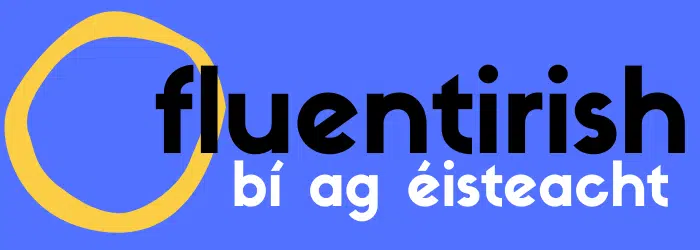Difference Between Classical And Modern Irish 📚
What Is The Difference Between Classical And Modern Irish?
Difference Between Classical And Modern Irish 📚: Obviously, a language can undergo changes through years, decades and even centuries. It has a limitless potential for evolution. The same is true for the Irish language. Before the modern Irish language some speak today, there existed a same – albeit a little different – form of the Irish literary language called Early Modern Irish or Classical Irish. This literary language had a shared literary form referred to as Classical Gaelic. What is Classic Irish or Gaelic’s main difference from the Modern Irish used today?
Of course, both have distinguishable features from each other. In this blog, we will walk you through the difference between Classical and Modern Irish. Read on to learn more.
>>Check out the latest podcasts on FluentIrish.com – and start improving!
What is Classical Gaelic?
Before discussing their differences, you must first know what Classical Gaelic is.
Sula ndéanann tú a gcuid difríochtaí a phlé, ní mór go mbeadh a fhios agat ar dtús cad é an Ghàidhlig Chlasaiceach.
First and foremost, Classical Gaelic and Classical Irish are different from one another. Classical Irish indicated the transition from Middle Irish to Modern Irish. We can also refer to it as Early Modern Irish. On the other hand, Classical Gaelic, as mentioned above, is the literary form of Early Modern Irish or Classical Irish and was utilised by both Ireland and Scotland for centuries dating to as early as the 11th century up to the 17th century, before the Modern Irish we know was developed.
Early Modern Irish: a more in-depth discussion
English came into Ireland and tried (forcefully) to eradicate the Irish language. You can read more of that in our blog that debates the number of people that spoke Irish before the famine. That is around the same time as the peak of the Irish language.
However, before that, it was the Early Modern Irish language that existed. The arrival of the Normans and their conquest of Ireland up until the English and anglicisation period of Ireland saw the birth and going out of Early Modern Irish.
Back then, poets were prominent and always wrote in an instructed way that helped them write in a classical way that was no longer spoken anywhere. These were known as the Bardic Syntactical Tracts or Irish Grammatical Tracts, which were dated in the late 15th century or earlier.
Quoting the The University of Duisburg-Essen,
The early modern period is characterised by the language of a professional class of poets called filí. The period itself is known as aosdána ‘the age of poetry’ and is referred to in linguistics as Classical Modern Irish (McManus 1994). The writers of the period were mostly secular employees of Irish courts (witness the quantity of praise-poetry produced, Ó Cuív 1965: 143). They clung to obsolete norms but were not completely conversant with the older forms of Irish which they emulated and the result was language hampered by its own artificiality. In this period the dichotomy of the older norm and contemporary usage lead to a tension between what was called ceartnabhfileadh ‘the poets’ standard’ and canamhain ‘speech’, i.e. the spoken Irish of the time.
Linguistically, the Early Modern Irish period is a time when the changes initiated and partially carried through in the Old and Middle Irish period were consolidated (McManus 1994). The verb prefixes are reduced in number, e.g. do-, ad-, no- and ro- frequently level to do- which is still present as a marker of the past under certain circumstances. Independent personal pronouns became normal with a single form of the copula verb. Indeed this pattern – invariant verb form and independent personal pronoun – spread to other verbs and has become common in Modern Irish outside of the present tense which does, however, retain synthetic forms.
Before the Classical and Modern Irish age
Before the Classical or Early Modern and Modern Irish age came into play, Old Irish was used. People of Ireland, the isle of Man and Scotland used Old Irish or Old Gaelic before they spoke Modern Irish, Manx and Scottish Gaelic, which means Old Irish inspired the creation of the previously mentioned languages.
Even before that, Primitive or Archaic Irish, the oldest form, existed. So obviously, the Irish language has come a long way.
Finally… the difference between Classical and Modern Irish
The main difference between the Classical and Modern Irish lies in who used the language. Classical or Early Modern Irish was used by both the Irish and Scots. Now, the Irish mainly use English and Modern Irish while the Scots use their own Scottish Gaelic.
Conclusion on the difference between Classical and Modern Irish
We hope you learned lots while reading our blog. The Modern Irish, before the modern times, had a lengthy phase of evolution, which dates back even before the 6th century. Fast forward to today, the Irish language has truly changed. But before the Modern Irish language existed the Early Modern Irish. Simultaneously, Classical Gaelic was there and used by the Irish and Scots. Of course, both have similarities and differences – same with anything old evolving into the ‘new’.
Learn Irish through Fluentirish
Now that we know the difference between Classical and Modern Irish, we want to discuss how we can help you in everything Irish-related.
Anois go bhfuil a fhios againn an difríocht idir Gaeilge Chlasaiceach agus Nua-Ghaeilge, ba mhaith linn plé a dhéanamh ar conas is féidir linn cabhrú leat i ngach rud a bhaineann leis an nGaeilge.
If you can understand simple Irish, you will want to improve. Fluentirish is here for you. Listen every day to get on with Irish.
Má tá tú ábalta Gaeilge shimplí a thuiscint – beidh tú ag iarraidh biseach a dhéanamh. Tá Fluentirish anseo faoi do choinne. Bí ag éisteacht gach aon lá chun a bheith ag gabháil ar aghaidh i nGaeilge.
We provide informative blogs and helpful podcasts that can help in your quest to learn the Irish language.
>>Which level?: Find out which level of spoken Irish you understand!




